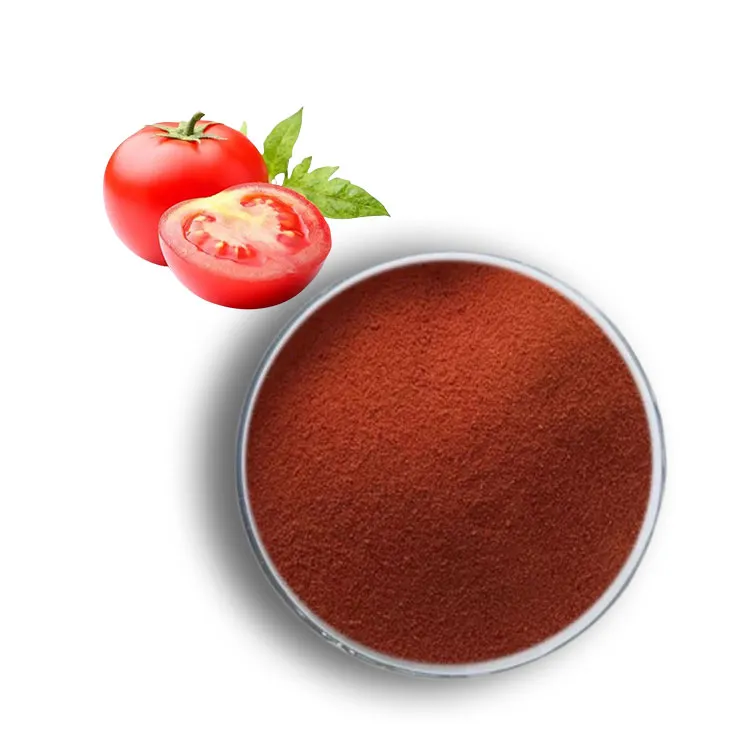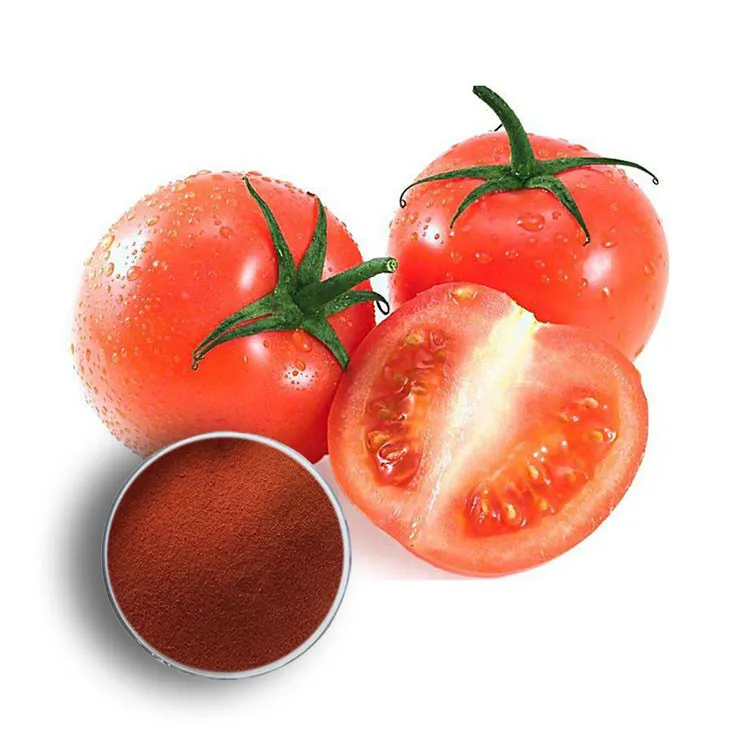- 0086-571-85302990
- sales@greenskybio.com
Lycopene: Uses, Advantages, Manufacturing Processes
2024-11-12

I. Introduction
Lycopene is a powerful and versatile compound that has gained significant attention in recent years. It is a type of carotenoid, which is a class of pigments found in plants, fruits, and vegetables. Among the various sources of Lycopene, tomatoes are one of the richest. This natural compound offers a wide range of uses and advantages, and its manufacturing process has also evolved to meet the growing demand for high - quality Lycopene products.

II. Uses of Lycopene
1. In the Food Industry
Colorant: One of the primary uses of lycopene in the food industry is as a natural colorant. It imparts a bright red color to food products, making it an attractive alternative to synthetic colorants. For example, it is used in the production of tomato - based products such as ketchup, tomato sauce, and pizza sauce. Lycopene - rich tomato extracts can enhance the visual appeal of these products, giving them a more vibrant and appetizing appearance.
Functional Ingredient: In addition to its color - enhancing properties, lycopene also serves as a functional ingredient in food. It has antioxidant properties that can help in preserving the quality of food products. By neutralizing free radicals, lycopene can slow down the oxidation process, which is responsible for spoilage and deterioration of food. This can extend the shelf life of products, reducing food waste and saving costs for food manufacturers.
2. In Skincare and Cosmetics
Anti - aging Properties: Lycopene has emerged as a key component in anti - aging skincare products. The skin is constantly exposed to environmental stressors such as UV radiation, pollution, and oxidative stress, which can lead to premature aging. Lycopene's antioxidant capabilities enable it to protect the skin from these harmful effects. It can neutralize free radicals in the skin, reducing the damage to collagen and elastin fibers, which are essential for maintaining skin's elasticity and firmness.
Improving Skin Health: Regular use of skincare products containing lycopene can also contribute to overall skin health. It can help in reducing inflammation, which is often associated with various skin conditions such as acne, eczema, and psoriasis. Lycopene - based creams and serums can also improve skin hydration, giving the skin a more youthful and radiant appearance.
3. In the Pharmaceutical Industry
Preventing Age - related Diseases: Lycopene has shown potential in preventing certain age - related diseases. Research has suggested that a diet rich in lycopene may be associated with a reduced risk of developing diseases such as cardiovascular diseases, prostate cancer, and macular degeneration. In the pharmaceutical industry, lycopene is being studied for its possible role in the development of preventive medications or dietary supplements targeting these conditions.
Treatment of Inflammatory Conditions: Due to its anti - inflammatory properties, lycopene may also have applications in the treatment of inflammatory diseases. It could potentially be used as an adjunct therapy in combination with existing medications to enhance the treatment outcomes of conditions such as rheumatoid arthritis and inflammatory bowel disease.

III. Advantages of Lycopene
1. Natural and Safe
One of the major advantages of lycopene is that it is a natural compound. It is derived from plants, mainly tomatoes, which makes it a more appealing option compared to synthetic chemicals. Since it is a natural ingredient, it is generally considered to be safe for consumption and topical application. However, like any substance, it is important to use it in appropriate amounts and under proper guidance, especially in the case of high - dose supplements.
2. High Antioxidant Capacity
Lycopene has a high antioxidant capacity. Antioxidants play a crucial role in maintaining the health of cells and tissues in the body. By scavenging free radicals, lycopene can prevent oxidative damage to DNA, proteins, and lipids. This antioxidant activity is not only beneficial for skin health but also has implications for overall health, including reducing the risk of chronic diseases associated with oxidative stress.
3. Wide Availability
Tomatoes, the main source of lycopene, are widely available around the world. This makes lycopene easily accessible either through the consumption of fresh tomatoes, tomato - based products, or lycopene - rich supplements. The wide availability also means that it can be incorporated into various products, from food and beverages to skincare and pharmaceutical products, without significant supply - chain challenges.

IV. Manufacturing Processes of Lycopene
1. Traditional Extraction Methods
Solvent Extraction: One of the traditional methods for extracting lycopene is solvent extraction. In this process, a suitable solvent such as hexane or ethyl acetate is used to dissolve lycopene from tomato pulp or other plant materials. The solvent - lycopene mixture is then separated from the solid residue, and the solvent is evaporated to obtain the lycopene extract. However, this method has some drawbacks, including the use of potentially hazardous solvents and the relatively low yield and purity of the extracted lycopene.
Supercritical Fluid Extraction: Another traditional approach is supercritical fluid extraction, which uses a supercritical fluid such as carbon dioxide. Supercritical carbon dioxide has properties between a gas and a liquid, which allows it to effectively extract lycopene. This method is considered more environmentally friendly compared to solvent extraction as it reduces the use of organic solvents. However, it requires high - pressure equipment and complex operating conditions, which can increase the cost of production.
2. Modern High - Yield and High - Purity Extraction Methods
Microwave - Assisted Extraction: Modern manufacturing processes focus on high - yield and high - purity extraction methods, such as microwave - assisted extraction. In this method, microwave energy is applied to the tomato material during the extraction process. The microwave radiation heats the sample rapidly and uniformly, which can shorten the extraction time while maintaining good quality of lycopene. This method also has the potential to increase the yield of lycopene extraction compared to traditional methods.
Enzyme - Assisted Extraction: Enzyme - assisted extraction is another modern technique. Enzymes are used to break down the cell walls of tomato cells, making it easier to extract lycopene. This method can improve the extraction efficiency and purity of lycopene. By using specific enzymes, it is possible to target the release of lycopene from the plant matrix without causing significant degradation of the compound itself.
3. Purification and Formulation
After extraction, the lycopene extract usually needs to be purified to remove impurities such as other carotenoids, lipids, and proteins. Chromatographic techniques such as column chromatography and high - performance liquid chromatography (HPLC) are commonly used for purification. Once purified, lycopene can be formulated into various products, such as capsules for dietary supplements, creams for skincare, or powders for use in the food industry.
V. Conclusion
Lycopene is a remarkable compound with diverse uses and numerous advantages. Its applications in the food, skincare, and pharmaceutical industries are based on its natural origin, antioxidant properties, and potential health benefits. The manufacturing processes of lycopene have evolved over time, with modern methods aiming to improve yield, purity, and efficiency. As research continues to explore the full potential of lycopene, it is expected that its uses will expand further, and it will play an increasingly important role in promoting health and well - being.
FAQ:
What are the main uses of lycopene?
Lycopene is mainly used as a natural colorant in the food industry, giving products a red color. It is also a key component in anti - aging skincare products, which can improve skin health.
How does lycopene help in preventing age - related diseases?
Lycopene has antioxidant properties. These antioxidants can neutralize free radicals in the body, which are often associated with the development of age - related diseases. By reducing the damage caused by free radicals, lycopene helps in preventing such diseases.
What are the advantages of using lycopene in skincare?
In skincare, lycopene can improve skin health. It helps in protecting the skin from environmental damage, reducing the signs of aging such as wrinkles and fine lines, and promoting a more youthful complexion.
What is microwave - assisted extraction in lycopene manufacturing?
Microwave - assisted extraction is a modern method in lycopene manufacturing. It uses microwaves to heat the raw materials. This can shorten the extraction time compared to traditional methods while still maintaining good quality of the extracted lycopene.
How is the purity of lycopene ensured during the manufacturing process?
During the manufacturing process, modern methods focus on high - purity extraction. For example, in microwave - assisted extraction, the appropriate parameters are set to ensure that only lycopene is effectively extracted. Also, purification steps such as chromatography may be used after extraction to further increase the purity of lycopene.
Related literature
- Lycopene: Chemical and Physical Properties"
- "The Role of Lycopene in Health and Disease Prevention"
- "Manufacturing Processes of Lycopene - A Review"
- ▶ Hesperidin
- ▶ Citrus Bioflavonoids
- ▶ Plant Extract
- ▶ lycopene
- ▶ Diosmin
- ▶ Grape seed extract
- ▶ Sea buckthorn Juice Powder
- ▶ Fruit Juice Powder
- ▶ Hops Extract
- ▶ Artichoke Extract
- ▶ Mushroom extract
- ▶ Astaxanthin
- ▶ Green Tea Extract
- ▶ Curcumin
- ▶ Horse Chestnut Extract
- ▶ Other Product
- ▶ Boswellia Serrata Extract
- ▶ Resveratrol
- ▶ Marigold Extract
- ▶ Grape Leaf Extract
- ▶ New Product
- ▶ Aminolevulinic acid
- ▶ Cranberry Extract
- ▶ Red Yeast Rice
- ▶ Red Wine Extract
-
Oyster Mushroom Extract Powder
2024-11-12
-
Lotus leaf extract
2024-11-12
-
Feverfew Extract
2024-11-12
-
Black Pepper Extract
2024-11-12
-
Motherwort Extract
2024-11-12
-
Sugarcane Extract
2024-11-12
-
Resveratrol extract
2024-11-12
-
Golden Seal Extract
2024-11-12
-
Bayberry Extract
2024-11-12
-
White Peony Extract
2024-11-12





















